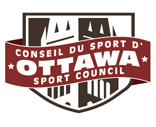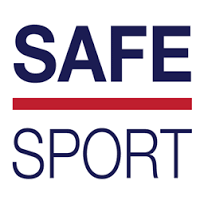It’s essential for sport – at all levels – to have a healthy and supportive environment to maintain and grow participation in sport. To create such an environment, sport organizations must make Safe Sport a priority.
What is Safe Sport?
Safe Sport constitutes an environment where athletes can train and compete in supportive, healthy and safe surroundings. The environment must be respectful, equitable and free from all forms of physical and emotional harassment and abuse. This also includes, but is not limited to, concussion and injury prevention, promoting diversity and inclusion, and anti-bullying measures.
Physical and emotional safety is a priority. Athletes must feel safe, supported, and strengthened so that everyone has an environment that allows them to thrive on and off the field.
How do we ensure our sport community is safe?
Safe Sport education is important as training and education for everyone involved is the first step toward a safer sport community. Such training will help members better understand how to handle situations of abuse and misconduct as well as help them monitor and support one another, limiting physical, emotional, and sexual abuse. In order to prevent abuse, knowing the signs and how to prevent abuse and misconduct are key. The goal is to eliminate all abuse, with a heightened focus on youth, who may not be able to recognize abuse or misconduct directed toward them.
Emotional abuse, specifically, can often manifest itself in the form of discrimination, whether explicit or implicit. Sport organizations must take an intentional approach to promoting equity, diversity, and inclusion to ensure athletes and coaches alike feel safe, supported and strengthened in their roles within the organization. Some barriers to diversity and inclusion include resistance to change, unconscious biases, and thinking that inclusion will happen organically. Training and education can help an organization overcome some of these barriers.
Sport organizations must also take an active approach to concussion and injury prevention and implement return to play policies that ensure no athlete resumes an activity without proper medical clearance.
What to do if you experience abuse?
It’s important for athletes and other members of the sport community to familiarize themselves with the available resources offered by their respective governing bodies. While your sport governing body might be your first stop, it’s also important to recognize when it might be best to approach an independent third party who can intervene.
The Canadian Sport Helpline is a national toll-free sport helpline that offers assistance to victims or witnesses of harassment, abuse or discrimination. The anonymous, confidential, and independent service will allow anyone to share and validate their concerns, obtain advice on required next steps, and be referred to other appropriate resources for follow up.
As a sport organization, what actions can be undertaken now?
As a first step, every sport organization should ensure it is fully familiarized with Safe Sport policies and protocols.
Over the past few years, Sport Canada has instituted new funding requirements for National Sport Organizations (NSOs) to address maltreatment, including adopting the Universal Code of Conduct to Prevent and Address Maltreatment in Sport (UCCMS) and abiding by minimum SafeSport training standards.
An example of a protocol any sport organization can and should adopt is the Rule of Two, where no one-on-one interactions occur between athletes and coaches. This is a general rule that ensures all interactions and communications are open, observable, and justifiable.
The Sport Information Resource Centre (SIRC) has produced and amalgamated a comprehensive set of resources to better understand Safe Sport. This hub will assist all sport organizations with important research, best practices, and tools to promote safety in sport.

